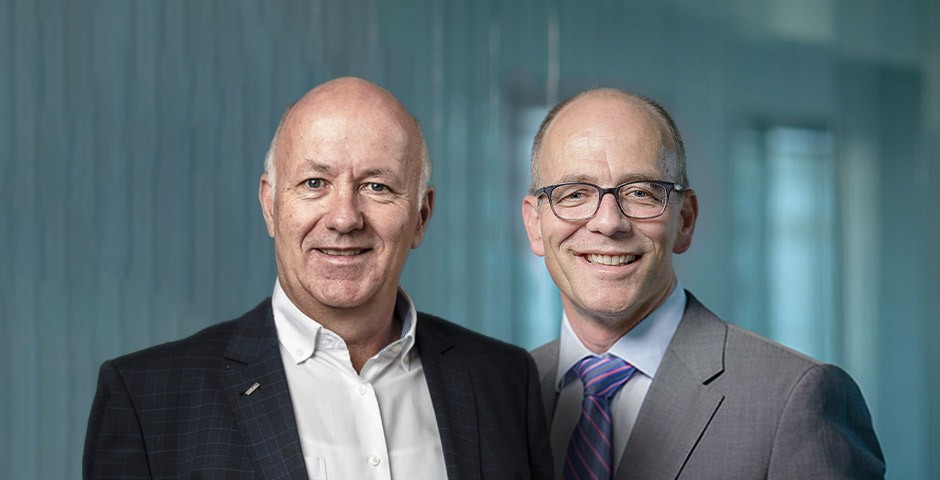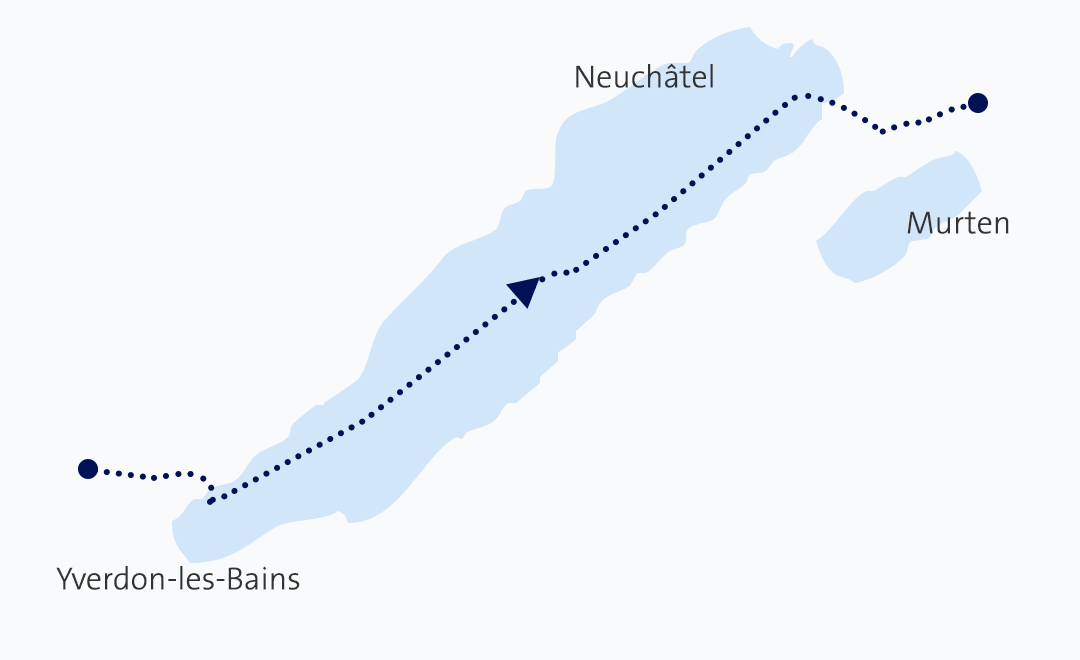
Roland, Roger - your connected solar-powered drone has just completed its maiden flight with flying colours. At the beginning of January, it flew through western Switzerland airspace for two hours. How do you feel?
Roland Siegwart: It’s a milestone for us and for Switzerland as a centre of drone technology, and was met with huge enthusiasm. This maiden flight is an impressive example of what advanced drone technology can achieve with a strong mobile network. We can now cover vast areas with autonomous drones and easily control missions from the desktop over the mobile network.
Roger Wüthrich-Hasenböhler: I’m thrilled. The solar-powered drone glided silently through the air following a complex flight path. This flight proves that we have the technology to implement ambitious drone missions like this.

The complex route of more than 70 kilometres was covered fully autonomously by the solar-powered drone based on data transmitted in real time over the Swisscom mobile network.
How did you come to team up with Swisscom, Roland?
I’ve been working with Roger Wüthrich-Hasenböhler and others at Swisscom for several years in the context of start-up support and DigitalSwitzerland activities. Swisscom is one of the strongest champions of innovation and entrepreneurship in Switzerland. It has made a decisive contribution to the current excellent ecosystem of research, start-ups and business. This impressive cooperation on long-distance drone flights is just one example.
What's your incentive?
Roland Siegwart: Swiss universities, the Federal Institute of Technology and the Federal Institute of Technology Lausanne (EPFL) in particular, along with their start-ups, have pioneered drone development. I aim to firmly establish Switzerland as world leader in professional drone technology. However, aside from outstanding research and start-ups, this also calls for strong cooperation with network operators and air traffic control and lots of test flights. We want Switzerland to be the first country in the world to seamlessly integrate drones into civil airspace. Our flight is the first major milestone on the way.
Roger, why is Swisscom supporting this drone project?
We want to ensure that Switzerland keeps and extends its pole position in drone technology. To do so, we have to digitise the currently unmonitored airspace below 600 metres and create the prerequisites for controlling commercial drone traffic reliably and efficiently. This calls for an extensive, high-performance network to transmit data to the drone in the air and thus ensure safe flying.
“The flight highlights the importance of a well-oiled ecosystem of research, start-ups, business and public authorities.”
Roger Wüthrich-Hasenböhler
The flight highlights the importance of a well-oiled ecosystem of research, start-ups, business and public authorities. The combination of research, innovation and implementation between the Federal Institute of Technology and companies like Swisscom is a key to successful innovation projects that create jobs and boost innovation within Switzerland.
Why does a drone have to be connected at all?
Roger Wüthrich-Hasenböhler: There are said to be more than 100,000 private drones in Switzerland today. These are operated directly by remote control. However, if a farmer wants to analyse his fields with a drone, he needs one that flies autonomously, controlled by a computer, without him having to be there. A connected drone knows where it has to fly and it can send data to a robot in the field so it knows where to irrigate and fertilise the soil. The drones correct their flight path thanks to sensors by the Swiss start-up, Involi, which are mounted on our masts.
Less fertiliser and no more water or food wastage: A visionary smart farming project from the Federal Institute of Technology. Swisscom is supporting it by connecting the drones so that they can transmit the necessary information. Total length of ETH Zurich video 01:48 min.
How will the way we use drones change in the upcoming years?
Roger Wüthrich-Hasenböhler: Commercial use of drones is still in its infancy. The future holds undreamed-of use cases in practically every industry. This is why further regulations need to be officially put in place to ensure safe operation.
Roland Siegwart: I’m confident that drones are going to become a naturally accepted, valuable tool within the next few years. They will analyse farmland daily, search for people lost in the mountains or buried in avalanches, support the fire service or even check the safety of bridges and other infrastructures. In doing so, they will improve the sustainability of agriculture, save a lot of human lives and considerably reduce the risks for search and rescue parties.
What is smart farming?
Smart farming enables the continuous monitoring of fields, the analysis of crop growth and health and any necessary interventions. Water or fertiliser shortages or pest damage can thus be detected at an early stage and targeted countermeasures taken. The use of pesticides can thus be decreased by 10 to 100-fold.
Switzerland has a long tradition in sustainable agriculture and leads the world in technologies required for smart farming such as robotics, sensor technology and artificial intelligence.
The “Swiss Smart Farming” Matterhorn project by DigitalSwitzerland aims to develop Switzerland into one of the foremost countries in smart farming technology and thus make a significant contribution to global food sustainability.
The flight over Lake Neuchâtel has shown for the first time that a drone can stay in the air on its own for several hours – without being controlled by farmers, for instance.
The aim is to push ahead at full speed with smart farming technology through a steadily growing consortium of partners from universities, industry, start-ups and the political sphere for the good of humanity and nature.
Subscribe to news
Subscribe to our news by e-mail
Contact us
Address
Swisscom
Media Relations
Alte Tiefenaustrasse 6
3048 Worblaufen
Postal address:
Postfach, CH-3050 Bern
Switzerland
Contact
Tel. +41 58 221 98 04
media@swisscom.com
Other contacts
Roland Siegwart

Roland Siegwart (1959) is professor at the Federal Institute of Technology Zurich. The robotics research laboratory headed by him occupies a pole position worldwide. He is co-founder of some high-tech start-ups. Siegwart’s research laboratory has been responsible for a number of impressive achievements: 15 years ago, the world’s first quadrotor drone flight; various records for solar-powered drones that stay in the air for several days, the first fully autonomous flights with cameras.
Roger Wüthrich-Hasenböhler

Roger Wüthrich-Hasenböhler was head of Swisscom’s SME division prior to being appointed the Head of Digital Business in 2016. As Chief Digital Officer, he is responsible for drawing together, coordinating and supporting Swisscom start-up initiatives, such as the StartUp Challenge, Pirates Hub and activities of the Swisscom outposts in Silicon Valley and China. He is the Chairman of localsearch.ch and member of various other Boards of Directors, including Axpo Holding AG.

